St. Sabina in Rome and the orange tree that San Domenico planted
The Roman church of Santa Sabina, built in the 5th century on the tomb of the Saint, on the Aventine, is one of the best preserved early Christian churches in the city. Santa Sabina was a Roman noble who was martyred after her conversion to Christianity.
A very special tree lives in the convent of the basilica. A living monument, an ancient tree considered miraculous that has flourished for more than 800 years and offers its fruits in one of the most beautiful sites in Rome. It was planted by San Domenico himself in the very distant 1220. Let’s find out this particular story together.
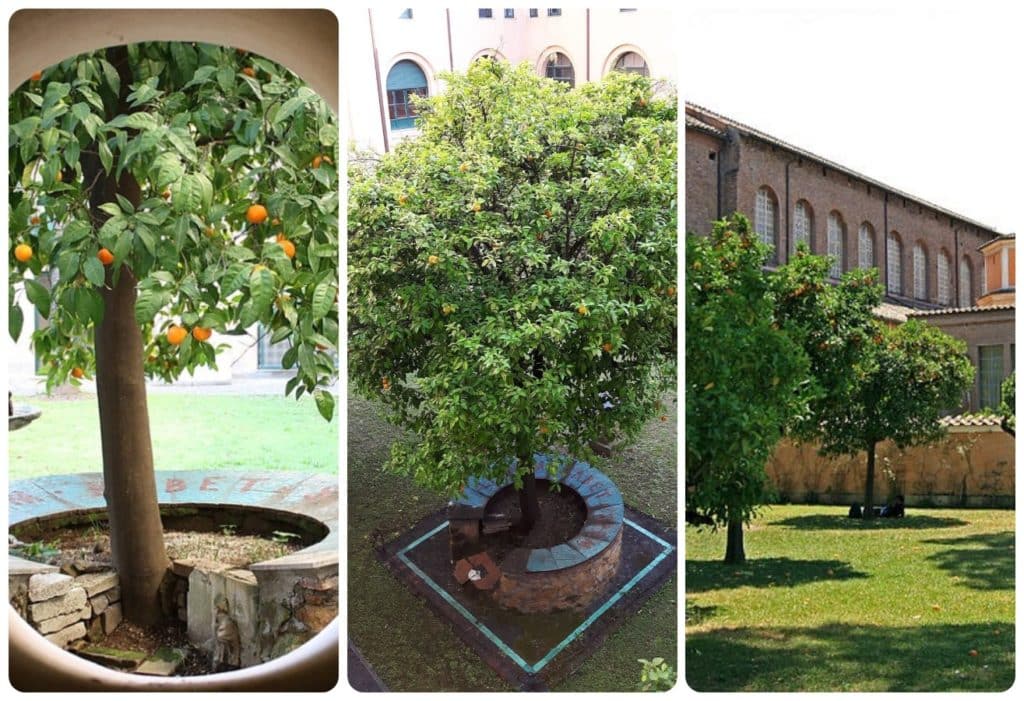
It is the first orange planted in Italy and is still the oldest in Europe.
In fact, St. Dominic brought the orange from Spain (his country of origin, he was a native of Careluega, 1170) and it was transplanted here in 1220 (until the 13th century the orange plant was unknown in Europe).
Domenico di Guzman, founder of the Order of Preachers in Toulouse in 1215 (better known as “Dominicans”) lived and worked here.
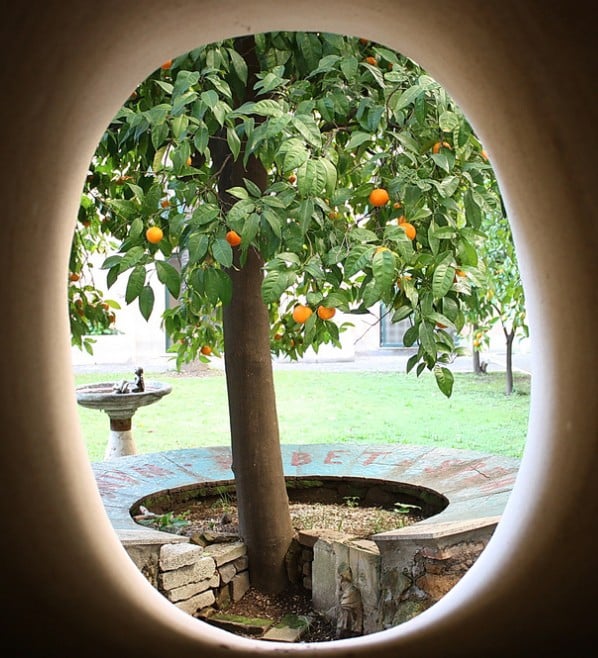
In Santa Sabina Domenico da Guzmán built the cloister and enlarged the convent.
The tree planted by San Domenico in the garden of the convent of Santa Sabina is considered miraculous (thanks also to the conduct of Domenico and the many miracles attributed to him) but this orange is considered miraculous also because over the course of eight centuries it has renewed itself. still producing beautiful oranges.
Many faithful over the centuries have flocked here to the convent to take some leaves and ask for the Saint’s intercession for healing from some disease.
The miraculous orange of San Domenico has survived to the present day.
Years ago there was a heavy snowfall in Rome that left it in ruins and with little hope of surviving, but the friars of the Order of Preachers, founded by St. Dominic, after a night of prayer saw new flowers blossom on the dry branches.
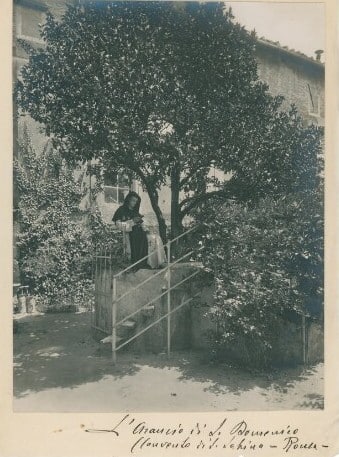
The orange has recovered unexpectedly, regenerating itself and today it is still possible to admire it through a hole in the wall that overlooks the convent’s garden, on one side of the basilica (located on the left of the main entrance to the church).
The oranges come from the Far East and produce fruit in the middle of winter.
The monks used the fruit without wasting anything. The candied peel was used to reinforce scarce food in the days and periods provided for by the monastic rule.
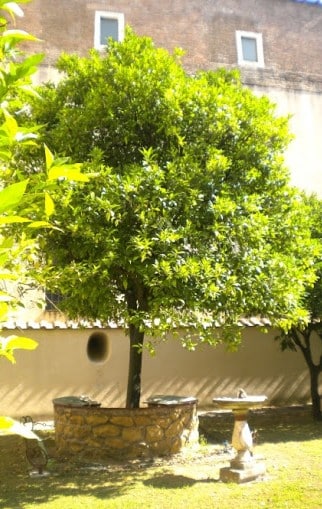
It is said that the five candied oranges that Saint Catherine offered in 1379 to Pope Urban VI (1378-1389), known for his difficult character, came from this tree to ask him to act with moderation towards the antipope Clement VII, showing him that even a sour fruit could potentially turn sweet.
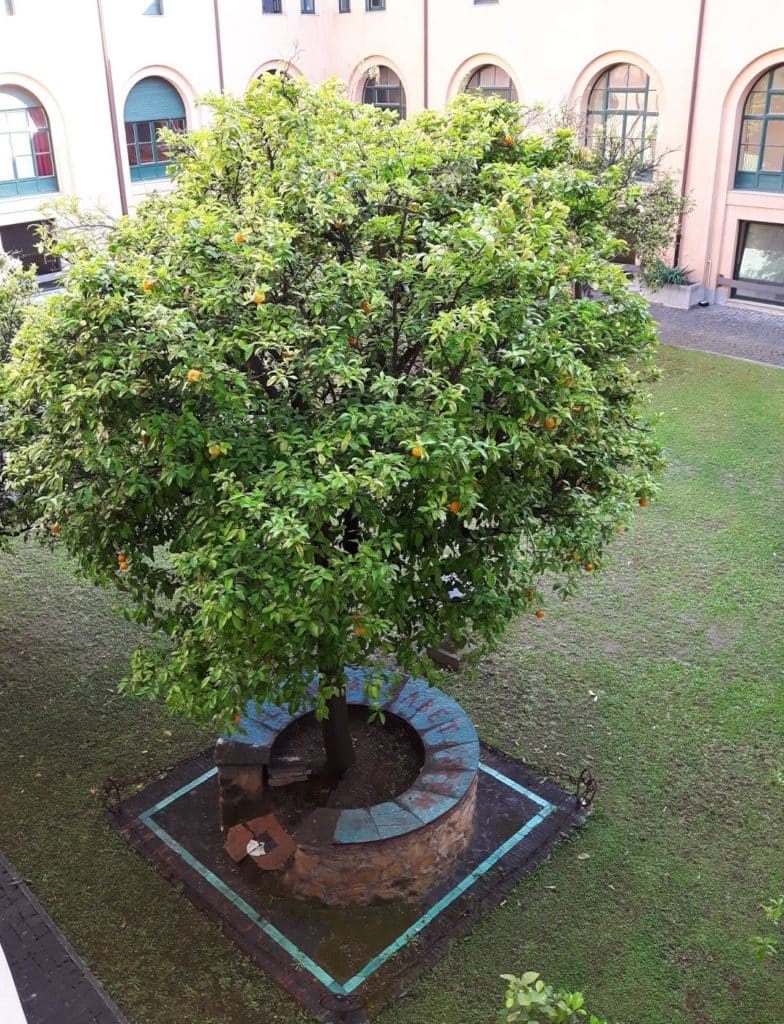
The church and the convent keep other fascinating secrets.
Santa Sabina is the most famous of the churches located on the Aventine, it was built using the 24 white marble columns belonging to the “Temple of Juno the Queen” which stood nearby.
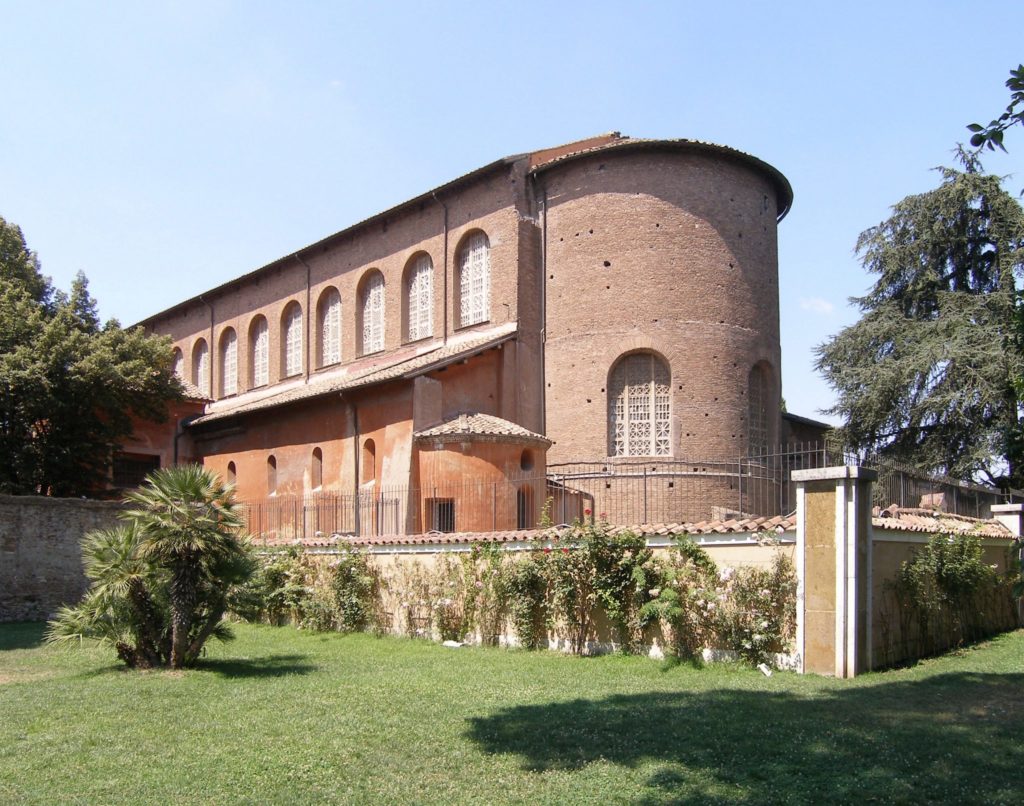
This church is dedicated to a Roman noblewoman who was beheaded during the persecutions of the emperor Hadrian in the second century. Sabina suffered martyrdom around the year 120 AD. Under the main altar the relics of the noble martyr are still preserved.
Immersed in the splendid setting of the Aventine Hill, between villas and the orange trees of the homonymous garden, it is chosen as a place for the wedding of many couples, enchanted by the charm and refinement of the building.
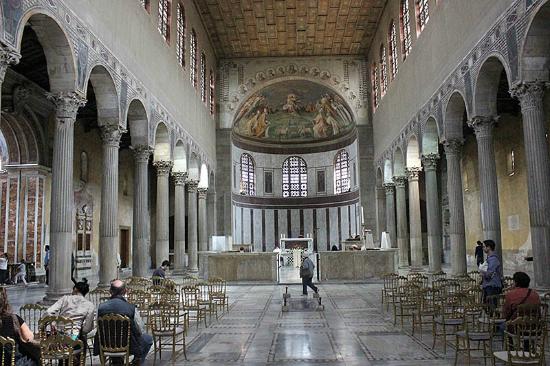
A peculiarity of the basilica, which is located in Piazza Pietro d’Illiria, is that it does not have a facade, which is incorporated into the atrium and is accessed through a portal preceded by a portico with three arches. The interior has three naves divided by 24 ancient columns dominated by 34 windows and a semicircular apse in correspondence with the main nave, the latter with a modern coffered ceiling, while it was originally covered with mosaics.
On the left side of the Basilica there is a small whitish twisted column. Above this ancient column there is an oval-shaped black stone that resembles one of those strange “pots” that are used in curling, the most particular winter sport known. The stone has holes and engravings and is called “lapis diaboli”, the Devil’s stone. It is said that it was used by the devil.

It is a very important religious structure from a historical and artistic point of view, with exceptional architectural and decorative features and visitors (many, before the pandemic) are entranced by so much beauty but are rarely attracted to this curious stone resting on the column. Thanks to the rubbing of the faithful, the stone appears very shiny.
But why should this stone belong to the Devil?
According to legend, the Devil himself tempted St. Dominic several times as he prayed in ecstasy at the entrance to the church of Santa Sabina. Despite all his efforts he was unable to make him sin and then very angry threw at him a very heavy block of black basalt which fortunately did not hit San Domenico and ended up on a slab, which is still broken.
The marks left by the fiery fingers of the devil are still visible on the stone.
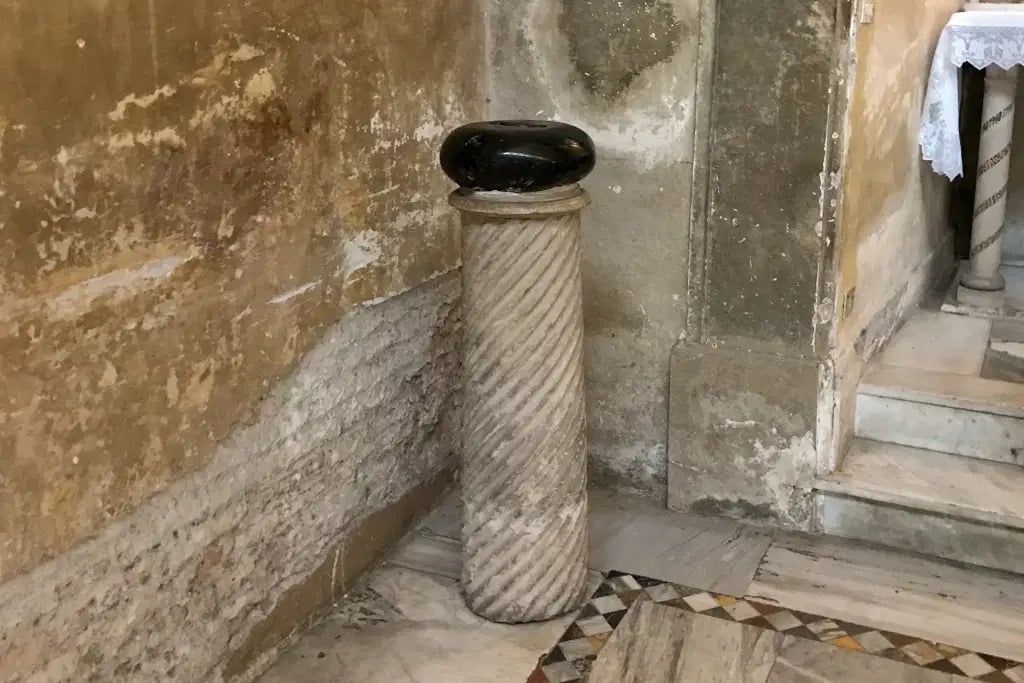
The story went like this: in 1220 San Domenico and his entourage of friars, who occupied the complex of Santa Sabina, came across the Devil several times. One evening, while Dominic was praying kneeling on the ground, the Devil decided to go to the facts. But the stone, as mentioned, only touched the Saint and the Devil was forced to leave frustrated.
However, it seems that, from time to time, he returns to this place to stay at the door of the basilica before leaving disconsolate. Another curiosity always concerns San Domenico, who planted the first orange plant to arrive in Italy right in the courtyard of the Basilica.
We like legends so much and this is the story that has fascinated the faithful for centuries, but reality tells us that the stone is nothing more than the weight of a Roman scale found in the basement and the slab was broken in 1527 by the architect Domenico Fontana during a restoration.
